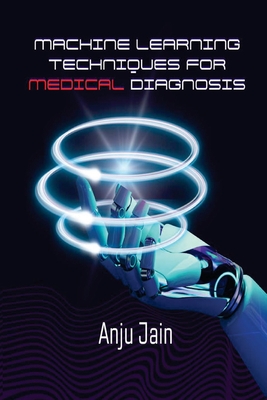You are here
Back to topMachine Learning Techniques for Medical Diagnosis (Large Print / Paperback)
Email or call for price
Description
The advancements in computing and information storage technology have led to the generation of a vast volume of data in the medical field. Within this data lies valuable information that, if extracted, can greatly enhance decision-making processes in healthcare. However, manually analyzing large medical datasets is nearly impossible. Therefore, research on mining medical data has been rapidly growing over the past few decades. Extracting knowledge automatically from medical data aids medical professionals in early diagnosis and treatment of high-risk diseases. Early detection of life-threatening illnesses like cancer, diabetes, and heart diseases is crucial for saving lives and reducing treatment costs. In recent times, the global outbreak of Covid-19 has placed an even greater responsibility on the machine learning community to improve the detection and treatment of this devastating disease. Machine learning, including automated disease prognosis and diagnosis, can assist healthcare personnel in coping with the mounting pressures, particularly in the current scenario. The need for machine learning algorithms to mine knowledge from medical data cannot be emphasized enough. Machine learning algorithms have the potential to revolutionize the medical field, impacting areas such as diagnosis, prognosis, and clinical decision-making. These algorithms model relationships and patterns within the data using techniques such as classification, regression, clustering, association mining, and hybrid models. The algorithms go through three stages: preprocessing, data modeling, and post-processing. Preprocessing involves preparing the raw data by eliminating noise, cleaning, reducing, and integrating data. Data modeling entails constructing models based on the preprocessed input, extracting patterns, and utilizing them effectively. Post-processing involves evaluating the performance of the extracted patterns or models using relevant metrics. Classification algorithms have been extensively researched for predictive tasks in medical applications. They operate in two phases: the training phase, where the classifier is trained using a training dataset, and the classification/prediction phase, where the model is used to predict instances that were not encountered during training. The performance of a classification algorithm is assessed on a test dataset. Classification algorithms have been widely employed in disease diagnosis using medical data and images. This research presents a comprehensive framework for evaluating the performance of disease diagnosis, addressing the issue of class imbalance in a single and multi-objective framework through the proposal of a Genetic Algorithm (GA) / Multi-Objective Genetic Algorithm (MOGA). Additionally, it applies Convolutional Neural Networks (CNN) to diagnose Covid-19 from X-ray images and predict protein functions.
